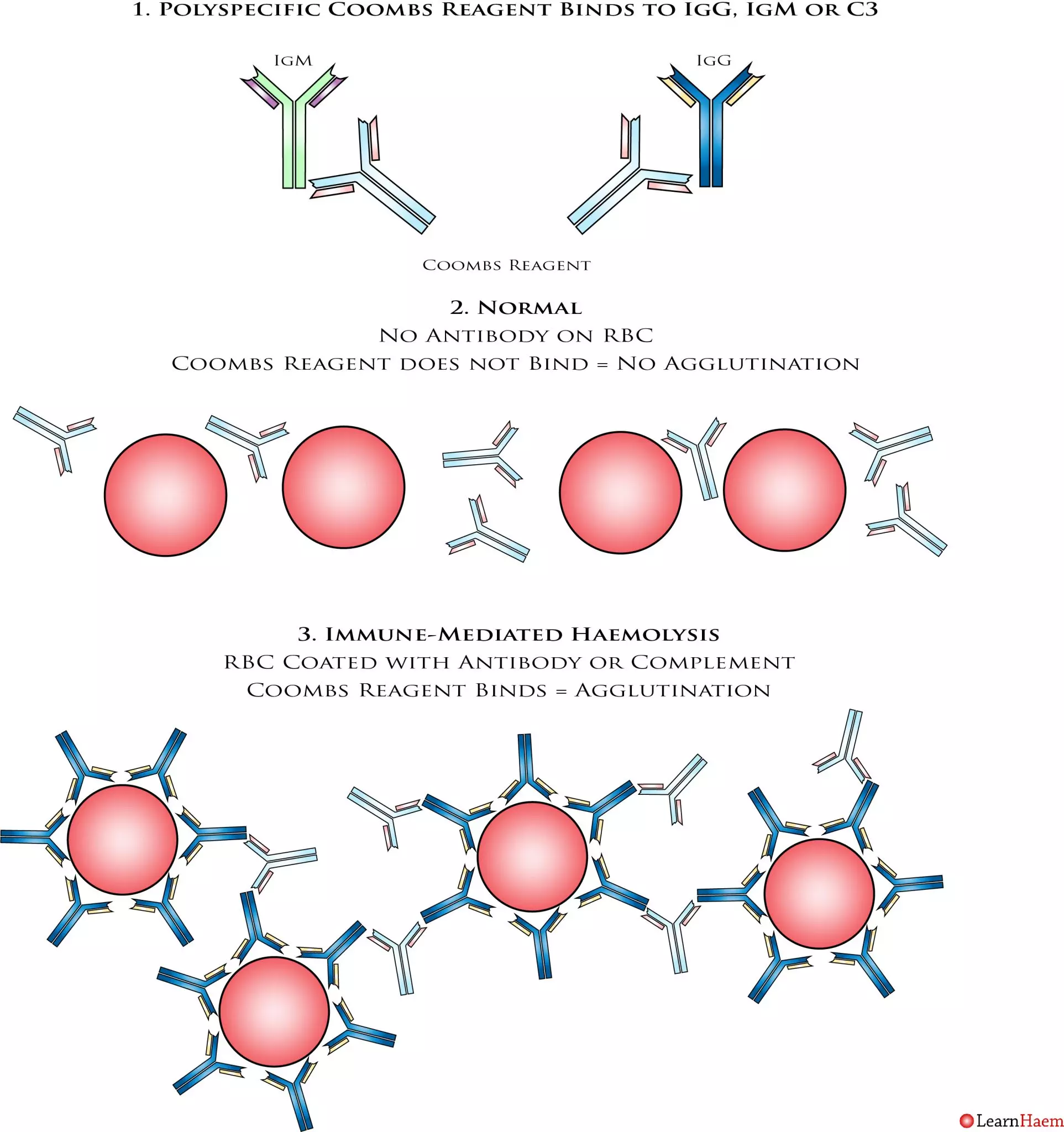Purpose of Test
- Detect antibody bound to RBC surface (in vivo sensitisation)
Causes of a positive DCT
- Non-specific autoantibody
- Alloantibodies reacting with recently-transfused donor red cells
- Alloantibodies from donor plasma reacting with recipient red cells
- Transfusion of high-titre group O platelets to A / B / AB individuals
- IVIG administration
- Maternal alloantibodies coating fetal red cells
- Passenger lymphocyte syndrome (donor lymphocytes producing antibodies against recipient red cells)
- Drug-induced haemolytic anaemia
- Monoclonal antibodies bound to RBC surface (e.g. daratumumab)
- Paraproteins with hypergammaglobulinaemia
- Antithymocyte globulin
- Can be seen in healthy individuals (1:7000)
The DCT Explained

The DCT is a test which is done to look for pre-formed antibody adherent to the red cell surface. A polyspecifc Coombs reagent, which binds to IgG, IgM or complement fragments is used. Normal individuals should have a negative DCT because they do not have antibodies on their red cells. Patients with antibody bound to the red cell surface will in turn bind the Coombs reagent, causing agglutination and a positive test.


Leave A Comment